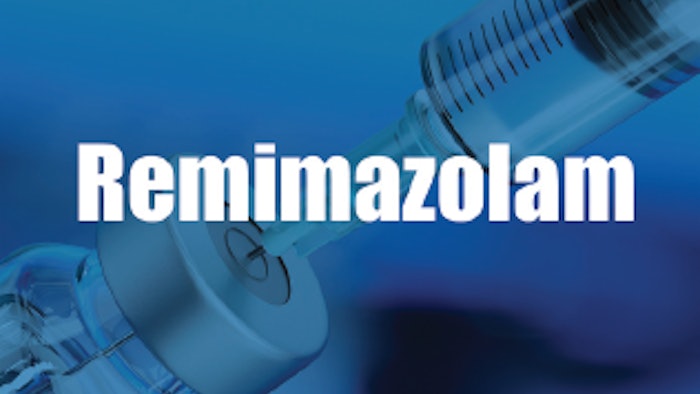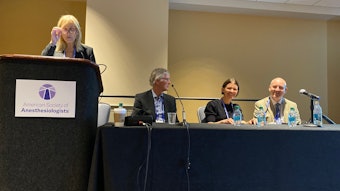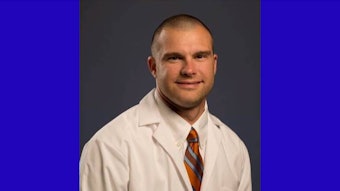Pro/Con: Sharpening the focus on remimazolam
The drug does have its advantages, but a pragmatic approach to usage is warranted.

Although it has been around for several years, remimazolam has gained popularity recently as an I.V., ultrafast-onset, esterase-metabolized benzodiazepine. The drug’s goal is to combine the anxiolytic, amnesic, hemodynamically stable, and sedative properties of midazolam with the pharmacodynamic profile of remifentanil.
Despite this surge in popularity, Miguel Teixeira, MD, Assistant Professor of Anesthesiology and Director of Respiratory Care Therapy in the Department of Anesthesiology and Perioperative Medicine at the Mayo Clinic in Rochester, Minnesota, said there are some concerns with the drug.
“I think the wording on remimazolam can sometimes be a little confusing,” he said during this session’s “con” stance. “It’s a pure benzoid. It’s made to sound a little bit like remifentanil because of its pharmacodynamic profile, and that’s because of its mechanism of action. My take on it is, how is it any different than midazolam? It’s basically midazolam, just shorter-acting.”
Taking the pro-remimazolam stance during the 2024 pro-con debate session, “Remimazolam: A Safer Sedative?” Arney Abcejo, MD, Associate Professor of Anesthesiology and Vice Chair of Innovation and Transformation, also at the Mayo Clinic, said one of the key differences between midazolam and remimazolam is faster metabolization.
“Once it’s in the system and metabolized, it’s gone and no longer reactive,” he said. “Ethanol does have effects on it, so when that’s in your system, it will increase your maximum concentrations. But this is the core of why remimazolam is different from midazolam, in its ability to be metabolized rapidly by tissue esterases.”
Because remimazolam is metabolized so quickly, its effects don’t last long. According to Dr. Teixeira, this can be a problem for patients undergoing longer procedures.
“Let’s talk about its (pharmacokinetic) profile,” he said. “Midazolam is converted into something that’s 1/8th as potent. Remimazolam is converted into something that’s 1/800th as potent and its terminal half-life is 45 minutes. But its half-life is about 10 minutes, so it is a very short-acting drug. So, for procedural sedation under 30 minutes, my argument would be: Do you want to re-dose the medicine every five minutes or so?”
Compared to other more commonly used drugs like remifentanil and propofol, Dr. Abcejo said the context-sensitive half-life – the time it takes to decrease by half once the infusion of the drug is stopped – of remimazolam outperforms most of them.
“It’s context-sensitive half-life, despite being infused for several hours, is around 10 minutes,” he said. “Remimazolam quickly comes off with an infusion; that’s the most important part of this.”
One area in which both doctors agreed was that there’s not enough information on opening the drug to all use cases.
“I’m a little worried about using this drug in pediatrics, in pregnant women, or women who are lactating,” Dr. Teixeira said. “The FDA label says don’t do it.”
Although Dr. Abcejo’s group has had some limited experience in those areas, he agreed that more research is needed.
Ultimately, Dr. Teixeira said he could see some benefits to remimazolam, while he also believes a cautious approach is warranted as with any drug that is relatively new on the scene.
“I think when you have a new drug, every publication that comes out is like, ‘oh, it’s a success story,’ and I want to see a more pragmatic approach,” he said. “We have to be very insightful in figuring out what is the right place to use this drug.”











